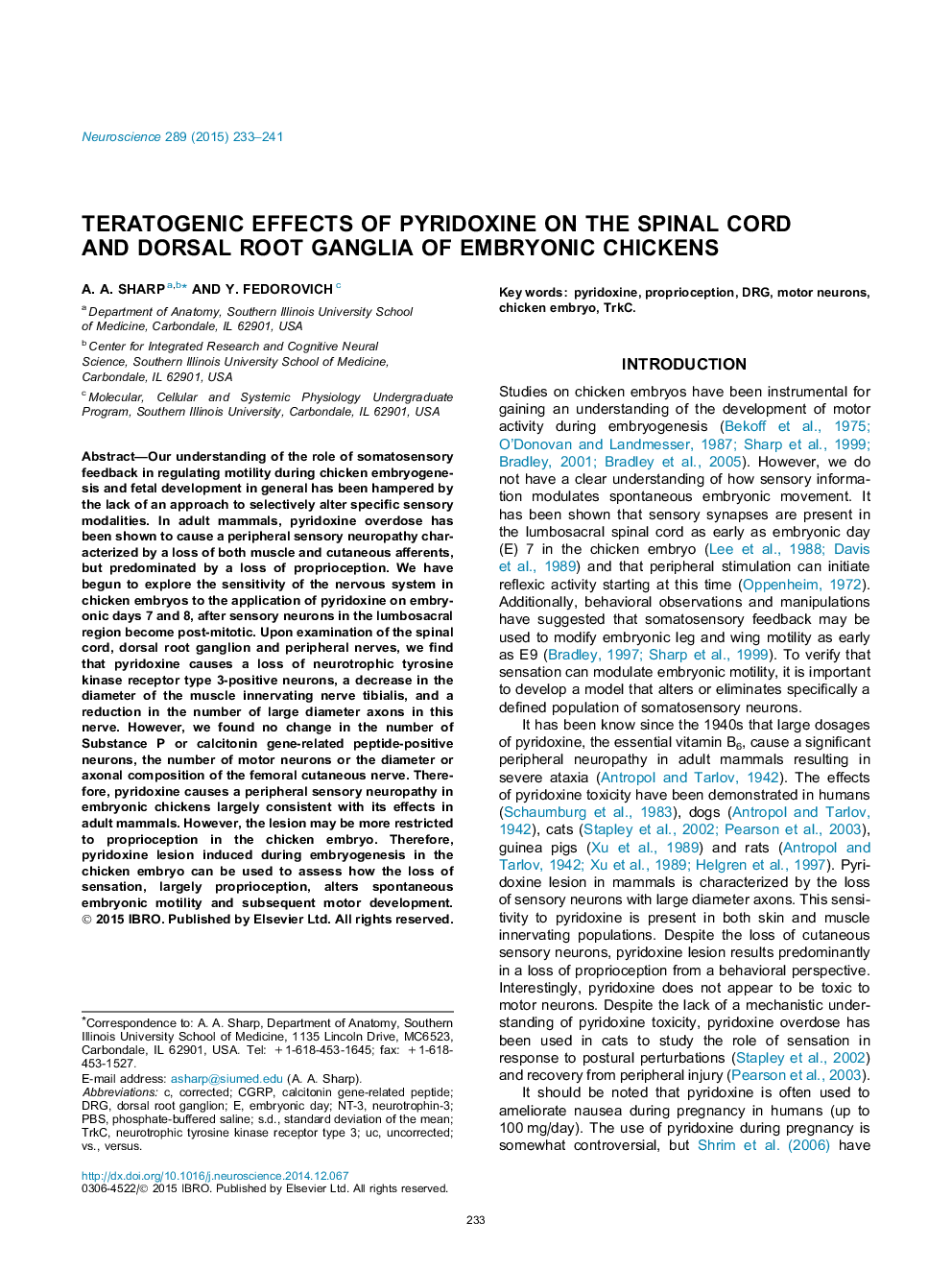| کد مقاله | کد نشریه | سال انتشار | مقاله انگلیسی | نسخه تمام متن |
|---|---|---|---|---|
| 4337552 | 1614787 | 2015 | 9 صفحه PDF | دانلود رایگان |
• Pyridoxine administration kills TrkC-positive sensory neurons in chicken embryos.
• Substance P- and CGRP-positive sensory neurons and motor neurons are not killed.
• Pyridoxine lesion is suitable for developmental studies on chick somatosensation.
Our understanding of the role of somatosensory feedback in regulating motility during chicken embryogenesis and fetal development in general has been hampered by the lack of an approach to selectively alter specific sensory modalities. In adult mammals, pyridoxine overdose has been shown to cause a peripheral sensory neuropathy characterized by a loss of both muscle and cutaneous afferents, but predominated by a loss of proprioception. We have begun to explore the sensitivity of the nervous system in chicken embryos to the application of pyridoxine on embryonic days 7 and 8, after sensory neurons in the lumbosacral region become post-mitotic. Upon examination of the spinal cord, dorsal root ganglion and peripheral nerves, we find that pyridoxine causes a loss of neurotrophic tyrosine kinase receptor type 3-positive neurons, a decrease in the diameter of the muscle innervating nerve tibialis, and a reduction in the number of large diameter axons in this nerve. However, we found no change in the number of Substance P or calcitonin gene-related peptide-positive neurons, the number of motor neurons or the diameter or axonal composition of the femoral cutaneous nerve. Therefore, pyridoxine causes a peripheral sensory neuropathy in embryonic chickens largely consistent with its effects in adult mammals. However, the lesion may be more restricted to proprioception in the chicken embryo. Therefore, pyridoxine lesion induced during embryogenesis in the chicken embryo can be used to assess how the loss of sensation, largely proprioception, alters spontaneous embryonic motility and subsequent motor development.
Journal: Neuroscience - Volume 289, 19 March 2015, Pages 233–241
